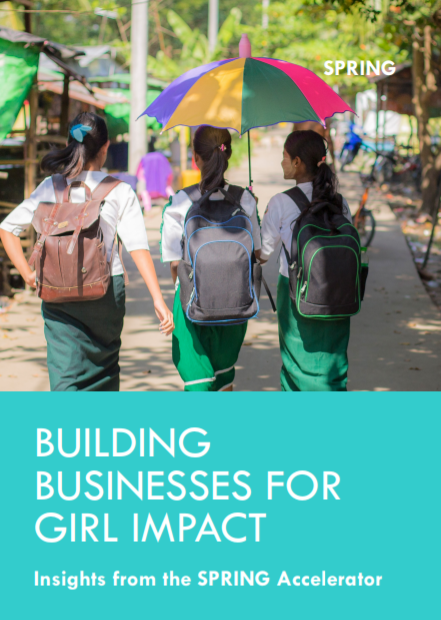Building Businesses for Girl Impact Insights from the SPRING Accelerator
Building Businesses for Girl Impact Insights from the SPRING Accelerator
75 SPRING social businesses in 9 South Asian and East African countries reached over 600k girls in 5 years: Find out what our key lessons are on designing accelerators, investing in emerging markets, human-centered design and business models in our new report ‘Building businesses for girl impact’.
In 2014, the UK Department for International Development (DFID) and the Nike Foundation’s Girl Effect had an idea. What if an accelerator could be created to identify and support ventures producing assets for girls that could contribute to their social and economic empowerment? It was to be a bold experiment. Backed by international donors and powered by world-class strategists and designers, the SPRING Accelerator set out to prove the concept that businesses could offer innovative and commercially viable solutions that would include and empower girls.
Four cohorts later, we have worked with 75 companies to discover and grow new
business models which demonstrate how to achieve impact for girls via commercial products and services. Our businesses developed radical innovations and took risks to reach untapped markets. Our participants learned how to innovate and gained insight into potential avenues for impact.
Many social impact-oriented accelerators operate with a sector-specific focus. SPRING was sector agnostic and unusual with its focus on impact for a particular demographic segment – adolescent girls. There were few accelerators focusing specifically on HCD, and social innovation was a much more nascent field; few players thought about or applied a gender lens to their investment, and only a fraction of the capital available today for social impact investing was ready to be deployed.
This report covers our learning so that other accelerators, programmes, donors and ecosystem-builders can build on our experience to better support businesses to innovate for impact. We covered so much ground that we decided to break up our learning into four sub-themes: the human-centred design process, business models for girl impact, accelerator design and investment. Each section can be read as a standalone report, but we hope that you will read them all, so that our learning can be applied to better support businesses to innovate for impact.

